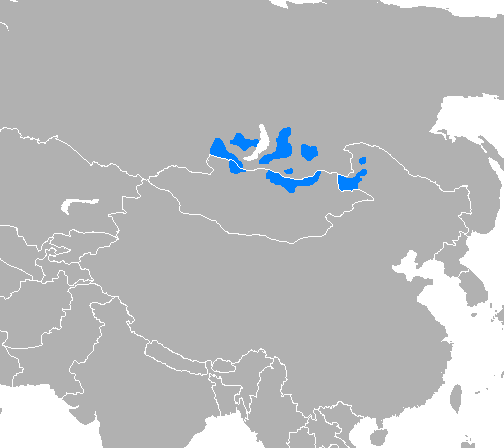Explore web search results related to this domain.
Buryatia, officially the Republic of Buryatia, is a republic of Russia located in the Russian Far East. Formerly part of the Siberian Federal District, it has been administered as part of the Far Eastern Federal District since 2018. It borders Irkutsk Oblast and Lake Baikal, the deepest lake ...
Over time, the Mongolic peoples of the regions developed into distinct groups, one of which became the Buryats. Further divisions of the Buryats came from those living on the western shore of Lake Baikal, with better land for agriculture, and those in the east, who practiced nomadism more regularly and continued residing in moveable felt yurts.Cossacks and other tsarists officials began moving eastward into the western Buryat lands in 1625, where they estimated 30,000 Buryats were living in southeastern Siberia, collecting tribute from other, small Siberian tribes.The Buryats resisted the incorporation into the Russian Empire's tribute system (yasak) that demanded a yearly supply of furs; it was not until the 1680s that the last of the eastern Buryat lands were forced to participate in the yasak system. In 1666, the fort of Udinskoye was founded.Buryatia, officially the Republic of Buryatia, is a republic of Russia located in the Russian Far East. Formerly part of the Siberian Federal District, it has been administered as part of the Far Eastern Federal District since 2018. It borders Irkutsk Oblast and Lake Baikal, the deepest lake in the world to the north, Zabaykalsky Krai to the east, Tuva to the west and Mongolia to the south.As a result of the superior farmland, the western side of Lake Baikal was settled by European peasants during the time of the Russian Empire – western Buryats were more exposed to and influenced by the culture, religions, and economy of their European neighbors, whereas the eastern Buryats maintained closer ties to other Mongolic peoples, Buddhism, and Asian civilizations.

The land of inhospitable mountains and vast wild steppes, the Republic of Buryatia aka Buryat Republic belongs to the mountainous regions of the Eastern Siberia. Its territory adjoins the shores of the famous Lake Baikal, the deepest freshwater lake in the world.
If you look at the map of the republic, in the north-east lies the vast Vitim Plateau with the majestic Muisky and Ikat Ranges north to it, closer to the Baikal shores is the semicircle of the Barguzinsky Range, and in the south-west are the wooded spurs of the Khamar-Daban and Ulan-Burgasy. And the west of Buryatia is reigned by the so-called Tunka Alps - the Eastern Sayan Range. The mountains here are the ultimate haughty lords of this land.The 33 pointed peaks guard the lands. According to Shagdar Baiminov, a famous poet, connoisseur of legends and traditions of the Tunkinskaya Valley, they are the petrified warriors of Geser. And the most revered cult place of the Khongodors, Ehiritians and Bulagats is a rock sculpture of Bukha-noion, the ancestor of these Buryat tribes, near the village of Dalakhai.Only one hiking trail has been laid and landscaped across the Barguzin Range. It starts at Barguzin village and ends at the Chivyrkuisky Bay. On the Baikal coast, all the trails lead to the Circum-Baikal Trail, which is still under construction. Before Western Buryats and Russian Cossacks came to the Barguzin valley, the Barguts and Evenks had lived there.The main attractions of the city are concentrated in the centre. For the convenience of tourists in Ulan-Ude, there is a special route, a so-called dedicated Green Path which will help not to miss the main landmarks of the city. In the centre of the city stands a monument that the locals call Hospitable Buryatia.
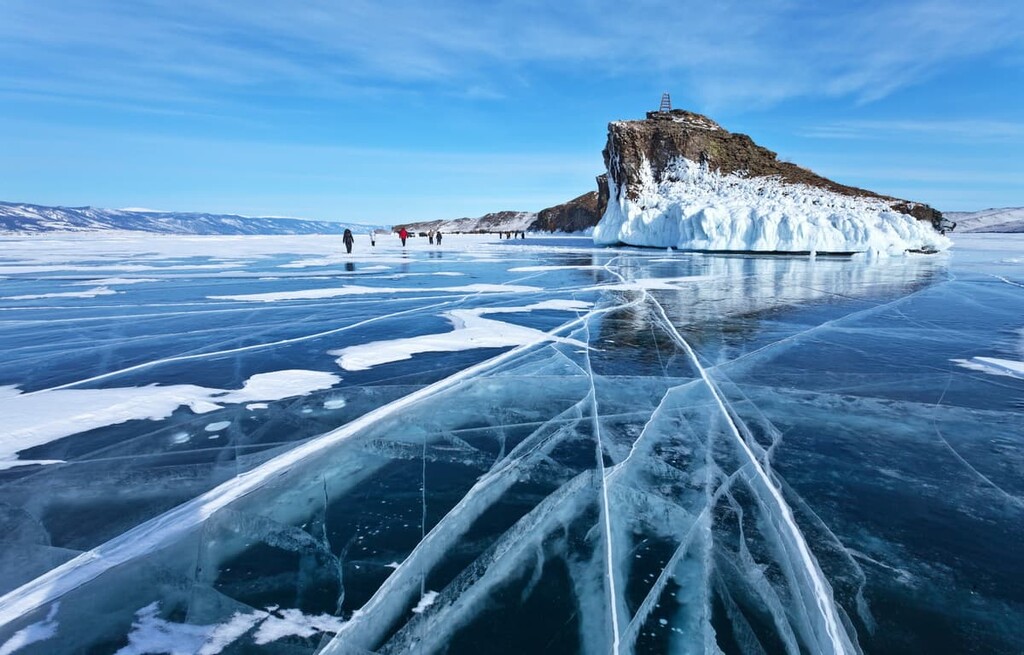

After an attempted brand makeover came in for criticism, Jaguar Land Rover now faces a new threat: its Chinese partner wants to eat its lunch in the UK.
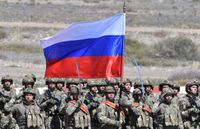
Russia’s key ally, North Korea, is stepping in to provide large-scale support – not only with weapons and military equipment but also by supplying personnel.
According to these sources, the North Koreans will form part of the “Special Buryat Battalion,” organized within the 11th separate airborne assault brigade of the Russian Armed Forces.
They are one of the two largest indigenous groups in Siberia, the other being the Yakuts. The majority of the Buryats today live in their titular homeland, the Republic of Buryatia, a federal subject of Russia which sprawls along the southern coast and partially straddles Lake Baikal.
In addition to genuine Buryat-Mongol tribes (Bulagad, Khori, Ekhired, Khongoodor) that merged with the Buryats, the Buryats also assimilated other groups, including some Oirats, the Khalkha, Tungus (Evenks) and others. The Khori-Barga had migrated out of the Barguzin eastward to the lands between the Greater Khingan and the Argun.All Buryats traced their lineage to a single mythical individual, with the particular ancestor varying based upon geographical region. Kinship also determined proximity, as neighbours were nearly always related. Groups of relatives that inhabited the same grazing land organized themselves into clans based on genealogy.The Buryats are a Mongolic ethnic group native to southeastern Siberia who speak the Buryat language. They are one of the two largest indigenous groups in Siberia, the other being the Yakuts. The majority of the Buryats today live in their titular homeland, the Republic of Buryatia, a federal subject of Russia which sprawls along the southern coast and partially straddles Lake Baikal.Smaller groups of Buryats also inhabit Ust-Orda Buryat Okrug (Irkutsk Oblast) and the Agin-Buryat Okrug (Zabaykalsky Krai) which are to the west and east of Buryatia respectively as well as northeastern Mongolia and Inner Mongolia, China.Buryats share many customs with other Mongols, including nomadic herding, and erecting gers for shelter. Today the majority of Buryats live in and around Ulan-Ude, the capital of the Buryat Republic, although many still follow a more traditional lifestyle in the countryside.

A session of the Buryat parliament in June 1992 declared that the 1937 division of the republic was unconstitutional. The main nationalist organization in the republic, the Buryat-Mongolian Peoples’ Party has demanded reunification of all Buryat-Mongolian lands on both sides of the ...
A session of the Buryat parliament in June 1992 declared that the 1937 division of the republic was unconstitutional. The main nationalist organization in the republic, the Buryat-Mongolian Peoples’ Party has demanded reunification of all Buryat-Mongolian lands on both sides of the Russian-Mongolian border.Territory west of Lake Baikal (12 per cent of the territory) went to Irkutsk Oblast, establishing a Buryat enclave (the Ust-Orda or Ust-Ordynsk Autonomous Okrug, AOk); the eastern steppe (12 per cent) was incorporated into Chita Oblast, where another enclave (the Aga Buryat or Aginsk AOk) was created. This division of the Buryat lands caused resentment.Although Russians penetrated the Buryat homelands as early as the seventeenth century, contacts between the two peoples remained limited until large-scale Russian migration in the eighteenth century. A Buryat nationalist movement developed at the turn of the century in response to the growing Russian presence.Mongolian cultural influence, however, remained powerful and led, at the end of the 1980s, to a revival of Buddhism and Lamaism in the region. A movement for closer links with Mongolia emerged. Together these elements laid the foundations for the declaration of sovereignty for Buryatia.

Abstract Okinskiy district of Buryatia is characterised by the entanglement of heterogeneous economies formed by the global demand for gold and jade, the remnants of Soviet planning systems at the local and municipal levels, traditional Soyot and Buryat land use practices and nascent adventure ...
Abstract Okinskiy district of Buryatia is characterised by the entanglement of heterogeneous economies formed by the global demand for gold and jade, the remnants of Soviet planning systems at the local and municipal levels, traditional Soyot and Buryat land use practices and nascent adventure and recreational tourist flows.Assessing effects of temporal compositing and varying observation periods for large-area land-cover mapping in semi-arid ecosystems: implications for global monitoring. ... Imetkhenov, A.B. (ed.). 2000. Atlas of the Republic of Buryatia.Atlas of the Republic of Buryatia. ... Federal Service of Geodesy and Cartography of Russia. )| false ... Imetkhenov, O.A. 2013. Aliber Mine is a high-altitude anthropogenic landscape park of regional significance (Eastern Sayan).Bulletin of the Buryat State University 4: 32–35. ... Aliber Mine is a high-altitude anthropogenic landscape park of regional significance (Eastern Sayan).


Ukrainian media reports indicate that Russia is organizing a battalion of North Korean nationals to assist in driving Kyiv's forces out of Kursk.
In an apparent effort to remedy its waning forces, the North Korean soldiers will form a "special Buryat battalion," named after the Mongolic ethnic group, indigenous to the region spanning Siberia as well as northern Mongolia and China.A December 2022 study by Alexey Bessudnov of Exeter University, which exampled ethnic inequalities among Russian fatalities in Ukraine found that Buryats and Tuvans, a Turkic minority in Russia, suffered nearly four times the risk of dying on the frontlines as those of ethnic Russians in Ukraine.This North Korean unit will complement the Buryat presence in the Russian army, currently one of the most overrepresented groups by their percentage of the country's population.
Buryat, northernmost of the major Mongol peoples, living south and east of Lake Baikal. By the Treaty of Nerchinsk (1689) their land was ceded by China to the Russian Empire. The Buryat are related by language, history, habitat, and economic type to the Khalkha Mongols of Outer Mongolia, the
The Buryat are related by language, history, habitat, and economic type to the Khalkha Mongols of Outer Mongolia, the Mongols of Inner Mongolia and Manchuria (the Northeast), and the Kalmyk (Oirat), who together form the principal Mongol peoples. The Buryat are among the smaller of these groups; they numbered some 550,000 in the early 21st century.The origins of the Buryat are not clear. One theory is that they were formed as an ethnic unit from various elements that settled in their present territory during the 13th and 14th centuries. By tradition they are a nomadic pastoral people who herd cattle, horses, sheep, goats, and a few camels.They traced descent through the paternal line, living in patrilineal families grouped into kin villages, clans, and clan confederations. The more permanently organized confederations were ruled by princely dynasties. In their religious life the Buryat had an intricate combination of shamanic and Buddhist traits.After the Russian Revolution the Buryat’s open-pasture pastoralism was replaced by collective-farm cattle breeding. Experimental farms for raising sables augmented hunting and trapping in the taiga region. Timbering is now a major industry, and the fishing industry has been developed.

The Buryat people have their roots in the Mongols, who travelled north from China and Manchuria, and the native Siberian Inuits, already living in the region. It is estimated they settled in south-central Siberia in the 13th and 14th centuries. Originally nomadic people with a stratified social ...
An Introduction To The Buryat... Bayanday, Irkutskiy region, Russia | © Julia Kuzenkova / Shutterstock ... .Did you know – Culture Trip now does bookable, small-group trips? Pick from authentic, immersive Epic Trips, compact and action-packed Mini Trips and sparkling, expansive Sailing Trips. Temple of the Pure Land in the Ivolginsky Datsan, Buryatia, Russia | © Mikhail Markovskiy / ShutterstockIn Russia, the Buryat heartland is south-central Siberia, and particularly in the Republic of Buryatia, which lies along the eastern side of Lake Baikal in Asian Russia. In the republic’s capital, Ulan Ude, Buryat culture continues to maintain a strong presence, from the colourful houses to the food. Lake Baikal landscape with an old railway bridge | © Nikitin Victor / ShutterstockDiscover one of Siberia's oldest people and one of Russia's most colourful indigenous people the Buryat.The Buryat people have their roots in the Mongols, who travelled north from China and Manchuria, and the native Siberian Inuits, already living in the region. It is estimated they settled in south-central Siberia in the 13th and 14th centuries. Originally nomadic people with a stratified social system, the Buryat people have historically herded cattle, horses, sheep and goats.
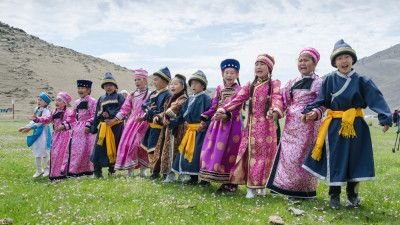

The investment will allow the Halewood factory to produce electric versions of its current models.
Jaguar Land Rover (JLR) will spend half a billion pounds upgrading a factory for electric vehicle production, it has been announced.
At the time of accession to Russia, ... cut off from the bulk of the Mongol tribes and began to transform into the future Buryat people. In the 18th century, Old Believers migrated to this land....
At the time of accession to Russia, a number of different Mongol tribes lived in this region, which determined the presence of different dialects of the Buryat language, unlike in national dress, customs, etc. After the Russian-Chinese border was set in 1729, these tribes were cut off from the bulk of the Mongol tribes and began to transform into the future Buryat people. In the 18th century, Old Believers migrated to this land.The Buryatia Republic, Russia overview, map location, flag, anthem, people, history, climate, nature, economy, tourism, picturesAccording to the 1897 census, there were 180 thousand Buryats in the region, the total population was 672 thousand people. In 1900, the Trans-Baikal Railway was opened. In 1917, the first national Buryat autonomy was formed - the State of Buryat-Mongolia.The capital city of Buryat republic: Ulan-Ude.
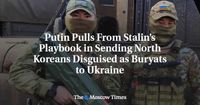
Opinion | As news of North Korean troops being sent to Russia to fight against Ukraine made global headlines, some sources claimed these troops were being trained at a military base in Ulan-Ude, Buryatia, to be sent to the Ukraine front line “disguised as Buryats” (since both Koreans and ...
Opinion | As news of North Korean troops being sent to Russia to fight against Ukraine made global headlines, some sources claimed these troops were being trained at a military base in Ulan-Ude, Buryatia, to be sent to the Ukraine front line “disguised as Buryats” (since both Koreans and Buryats are Asians and ostensibly hard to tell apart).Buryats are an Indigenous Siberian nation of Mongolic origin which is known to be significantly overrepresented both among Russia’s invading forces in Ukraine and among the Russian-side casualties of the war. “Putin has negotiated that Koreans from the DPRK [North Korea] would fight in Ukraine under the guise of Buryats, the media writes.A week later, the Free Buryatia Foundation published a cartoon where President Vladimir Putin instructs two Korean soldiers: “Korean Comrades, your task is to pretend to be Buryats pretending to be Donbas coal miners!” This references the fact that Buryat troops, along with other Russian forces, were deployed to the Donbas War under the guise of a “Donbas militia.” “History repeats itself in strange ways,” says Dr.Sayana Namsaraeva, a Buryat scholar and senior research associate at the Mongolia & Inner Asia Studies Unit at the University of Cambridge whose recent research work focuses on Buryat and other Soviet-Asian involvement in the 1950-1953 Korean War in which Buryats, Sakha, Tuvans and other Soviet Asians were deployed to fight for North Korea in the Korean War under the guise of Chinese volunteers.
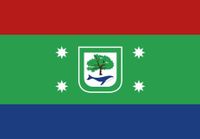
Abkhazia Aboriginals of Australia Albanians in Macedonia Amazigh Ambazonia Armenia Bashkortostan Belau Biafra Bougainville Buffalo River Dene Nation Burma Buryatia Cabinda Chechen Republic of Ichkeria Chin Chuvash Circassia Cordillera Degar-Montagnards East Timor
The Metropolitan Police has launched a murder probe in south London after the death of the 26-year-old died of stab wounds.Separate stabbing incidents » · Conservative leadership hopeful Boris Johnson has defended his infamous description of black people in Africa bearing “watermelon smiles” ...
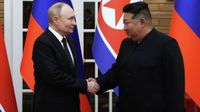
The Russians assembled a "special Buryat battalion" recruited from among citizens of Democratic People's Republic of Korea, while 18 North Korean personnel have already escaped from positions located along the border of Russia's Bryansk and Kursk oblasts.
Previously, reports circulated concerning the assembling of a "special Buryat battalion" in the Russian army.
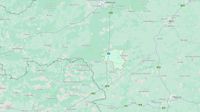
The Russians have tracked down and detained 18 North Korean servicemen who attempted to escape from the positions of the Russian Armed Forces in Russia's Kursk Oblast. These soldiers may be used in assault operations against the Ukrainian Armed Forces.
Background: It became known on 15 October that the Russians had assembled a "special Buryat battalion" made up of citizens recruited from the Democratic People's Republic of Korea, but 18 North Korean personnel had already escaped from positions on the border of Russia's Bryansk and Kursk oblasts.
Buryatia (Russian: Бур́ятия boor-YAH-tee-yuh) is a republic in Eastern Siberia, which borders Tuva to the west, Irkutsk Oblast to the northwest, Zabaykalsky Krai to the east, and Mongolia to the south.
Earth > Europe > Russia > Siberia > Eastern Siberia > Buryatia · Jump to navigation Jump to search · Retrieved from "https://wikitravel.org/wiki/en/index.php?title=Buryatia&oldid=2447700" Categories: Has custom banner · Articles needing IsPartOf category ·

Barring an upset in Saturday's ACC title game between Clemson and SMU, Alabama might be headed back to the College Football Playoff for the ninth time in the past 11 seasons, as the Crimson Tide were ranked No. 11 in the latest CFP rankings on Tuesday.
Crimson Tide land at No.
The majority of Buryat speakers live in Russia along the northern border of Mongolia. In Russia, it is an official language in the Republic of Buryatia and was an official language in the former Ust-Orda Buryatia and Aga Buryatia autonomous okrugs. In the Russian census of 2002, 353,113 people ...
The majority of Buryat speakers live in Russia along the northern border of Mongolia. In Russia, it is an official language in the Republic of Buryatia and was an official language in the former Ust-Orda Buryatia and Aga Buryatia autonomous okrugs. In the Russian census of 2002, 353,113 people out of an ethnic population of 445,175 reported speaking Buryat (72.3%).The delimitation of Buryat mostly concerns its relationship to its immediate neighbors, Mongolian proper and Khamnigan. While Khamnigan is sometimes regarded as a dialect of Buryat, this is not supported by isoglosses. The same holds for Tsongol and Sartul dialects, which rather group with Khalkha Mongolian to which they historically belong.Buryat has the vowel phonemes /i, ʉ, e, a, u, o, ɔ/ (plus a few diphthongs), and the consonant phonemes /b, g, d, tʰ, m, n, x, l, r/ (each with a corresponding palatalized phoneme) and /s, ʃ, z, ʒ, h, j/. These vowels are restricted in their occurrence according to vowel harmony.Some other 15,694 can also speak Buryat, mostly ethnic Russians. Buryats in Russia have a separate literary standard, written in a Cyrillic alphabet.
